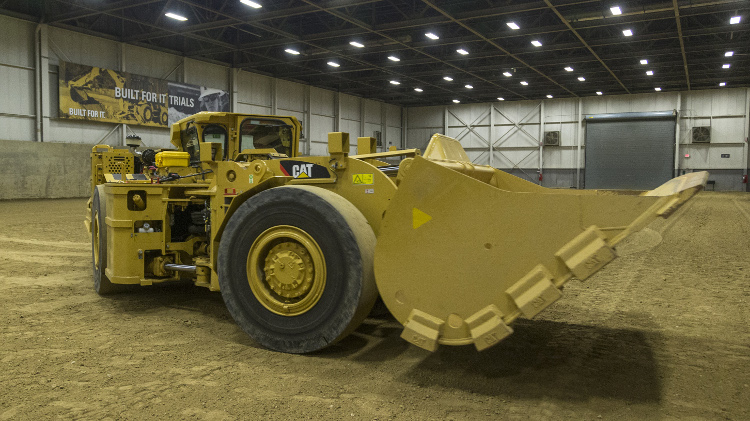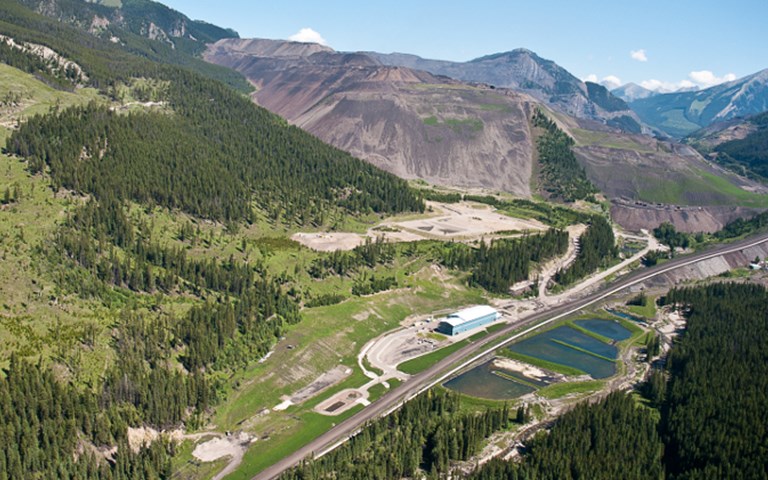Teck set a Q2 sales record for metallurgical coal this year, and production records in both metallurgical coal and zinc. The company has six metallurgical coal operations it is actively mining, including Elk Valley (pictured). Courtesy of Teck Resources
While voracious Chinese demand boosted seaborne coal and zinc miners’ fortunes in the first half of 2017, nickel saw a downturn in an oversupplied market. Meanwhile, the growing electric vehicle sector propelled lithium and cobalt staking and exploration.
China’s decision to pump money into its economy via credit boosted metal-intensive sectors like infrastructure and real estate and sent demand for steelmaking commodities soaring this year.
According to Scotiabank commodity economist Rory Johnston, the first half of 2017 has seen “a lot of surprises” in metal prices, particularly metallurgical coal and iron ore, which “really rallied.” Given that China consumes over 50 per cent of the world’s metals, “anything [China] does has a dramatic impact,” he said.
Metallurgical coal miners, like Canada’s Teck Resources, profited when this increased demand converged with two concurrent supply shocks. First, Beijing curtailed the allowable production of domestic metallurgical coal. Then Cyclone Debbie brought mining operations to a standstill in northeastern Australia, a major metallurgical coal producing region.
As a result, Teck reported a profit of $577 million in its second quarter (Q2), a huge jump from $15 million a year ago. It set a Q2 sales record for metallurgical coal and production records in both metallurgical coal and zinc. Teck spokesperson Chris Stannell credited the company’s stellar performance to both its steel-making business and “a tight zinc market.” The company also updated its steelmaking coal guidance in early September to between 7.2 and 7.5 million tonnes in the third quarter, up from its previous estimates of 7 million tonnes, “reflecting strong coal demand in the quarter.”
RELATED: Steelmaking coal price surge reinvigorates Canadian mines
Zinc, used in construction to protect steel and iron from rusting, also benefitted from boosted Chinese demand. It, too, has had a “promising supply story,” according to Johnston, given that a number of the world’s largest mines depleted their profitable ore and closed recently. Teck’s gross profit from its zinc business unit was $153 million in Q2 compared with $99 million a year ago, and Vancouver-based Trevali Mining, with a zinc mine in New Brunswick and another in Peru, reported a $126,000 Q2 profit compared to a $335,000 loss in the same period of last year. The company also purchased from Glencore a pair of 2,000-tonne-per-day zinc mines, one in Namibia, the other in Burkina Faso. The acquisitions in late August will double Trevali’s zinc output.
Nickel prices, however, deteriorated in Q2 of 2017, after the two political issues contributing to a brief uptick in prices in Q1 were resolved. In January, Indonesia relaxed its export ban on unprocessed minerals and the Philippines’ environment minister Regina Lopez, who threatened to close half the country’s nickel mines, was sacked in May. The prior bullish narrative precipitated by these two factors was an anomaly in a decade otherwise characterised by a surplus of the metal and plunging prices.
Vale Canada has been struggling in a depressed market, announcing in August that it has put plans to move its Voisey’s Bay mine underground on hold. It had announced in March that operations at its historic Stobie mine in Sudbury will end this year and two months later said its Birchtree mine in Manitoba will be put on “extended care and maintenance” as of October. Vale summarized these moves in its Q2 report to investors as “actions to adjust our supply of nickel to a lower price environment.”
Despite current political volatility, the gold market has remained relatively unchanged in 2017. Johnston surmised that the instability has been offset by an “ever-rising interest rate environment.” That said, the price of gold jumped 2.25 per cent on August 11, following U.S. President Donald Trump’s antagonistic tweets about North Korea.
There has been a flurry of interest and rapid project development in the “technology” metals, in particular cobalt and lithium, both high in demand and facing shortages, CRU Group analyst Alex Laugharne said. “Things are moving ahead pretty quickly,” he said. “Companies are taking advantage of much higher prices than we’ve seen historically.” Prices for both spot and contract lithium carbonate have more than doubled since the start of 2015.
Nemaska Lithium is targeting commercial-scale production at its Whabouchi project in Quebec by early 2019, helped along by $50 million in bought-deal financing that was completed in June. Vancouver-based Lithium Americas, which has significant projects in Argentina and Nevada, reported US$1.6 million in sales in Q2, compared to US$0.2 million in the same quarter last year.
RELATED: Lithium experiencing a “second coming” driven by growing interest in electric cars
Cobalt is another key component for electric vehicle batteries. There has been a rush of staking in and around Cobalt, Ontario, and in late June, First Cobalt finalized plans to merge with Cobalt One and Cobalt Tech, creating the largest pure-play exploration company in the region. Meanwhile, Vancouver outfit eCobalt has begun pre-construction activities at its Idaho Cobalt project, the only near-term primary cobalt project in the United States, which is significant as cobalt occurs almost exclusively as a by- or coproduct of other minerals.
Exploration is also seeing an uptick as commodities recover from a prolonged rout, and Canada is set to benefit. In its annual review of the mining industry, Mine 2017, PwC reported Canada is the world’s top destination for mining exploration investment, attracting 14 per cent of the global exploration budget last year. According to the report, this is the result of a “guarded, frugal mindset” the mining industry has maintained to “reassure nervous and discontented investors.” This mindset results in activity in the “safest political geographies,” like Canada and Australia.
“We are moving out of declining prices for the majority of commodities from around 2013 to early 2016,” Laugharne explained. More money is pumped into exploration by traditional financing “when the market moves from oversupplied or balanced into one where there is an awareness of a forthcoming deficit.” Canada is an obvious choice in part because it “is perceived as being more jurisdictionally mining-friendly” than its safe-haven competitors.
Canada’s oil and gas sector has witnessed similar confidence in exploration. Petroleum Services of Canada’s July drilling activity forecast demonstrated that 3,344 wells had been drilled in the first six month of 2017, well over double the number in the first six months of 2016.




